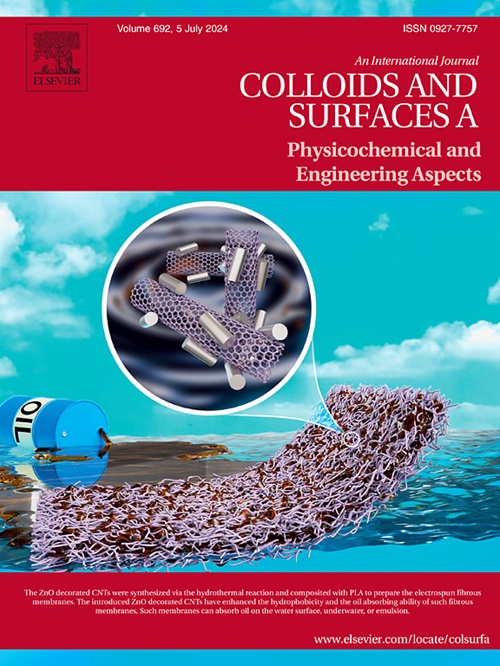缺陷苯对溴化高硫石油焦去除气态汞的定量贡献:实验和密度泛函理论研究
IF 4.9
2区 化学
Q2 CHEMISTRY, PHYSICAL
Colloids and Surfaces A: Physicochemical and Engineering Aspects
Pub Date : 2025-04-26
DOI:10.1016/j.colsurfa.2025.137030
引用次数: 0
摘要
高硫石油焦(HSPC)机械化学过程中缺陷苯对脱除Hg0的贡献尚未量化。本研究通过实验和密度泛函理论(DFT)对汞的去除性能、缺陷苯的识别、缺陷模型的构建以及汞氧化途径进行了研究。结果表明,噻吩边缘(TE)降低了缺陷产生的能量需求。溴有利于在轻或中度缺陷构型上结合,进一步提高了核心原子的反应性。溴化边缘缺陷导致Hg0的空间吸附。TE和氧边(OE)不能作为纯碳边(PCE),而溴化缺陷纯碳边是提高除汞效率的主要贡献者,其释放的Hg0吸附能为−180 kJ/mol,显著高于氧化能57.94 kJ/mol。缺陷HSPC除具有吸附Hg0的作用外,还具有催化作用。实验与计算结果吻合较好。本研究可为改性碳基前驱体的机械化学改性过程脱除Hg0提供理论认识。本文章由计算机程序翻译,如有差异,请以英文原文为准。
Quantitative contribution of defective benzene on brominated high-sulfur petroleum coke to remove gaseous mercury: Experimental and density functional theory study
The contributions of defective benzene on high-sulfur petroleum coke (HSPC) during mechanochemistry to Hg0 removal have not been quantified. In this study, mercury removal performance, identification of defective benzene, defective model construction, and mercury oxidation pathway were performed by experiment and density functional theory (DFT). The results illustrate that thiophene edge (TE) reduced the energy requirement of defect generation. Bromine was favorable to bind on the light or moderate defective configurations, further improving the reactivity of the core atoms. Defective brominated edges led to the spatial adsorption of Hg0. While TE and oxygen edge (OE) cannot work as pure carbon edge (PCE), the main contributor to improving mercury removal efficiency was the brominated defective pure carbon edge, where the released Hg0 adsorption energy of −180 kJ/mol was significantly higher than oxidation energy of 57.94 kJ/mol. Besides adsorbent of Hg0, the defective HSPC could play a catalytic-like role. Both experiment and calculation results are well consistent. This study can provide a theoretical understanding of mechanochemical modification process of modified carbon-based precursors for Hg0 removal.
求助全文
通过发布文献求助,成功后即可免费获取论文全文。
去求助
来源期刊
CiteScore
8.70
自引率
9.60%
发文量
2421
审稿时长
56 days
期刊介绍:
Colloids and Surfaces A: Physicochemical and Engineering Aspects is an international journal devoted to the science underlying applications of colloids and interfacial phenomena.
The journal aims at publishing high quality research papers featuring new materials or new insights into the role of colloid and interface science in (for example) food, energy, minerals processing, pharmaceuticals or the environment.

 求助内容:
求助内容: 应助结果提醒方式:
应助结果提醒方式:


